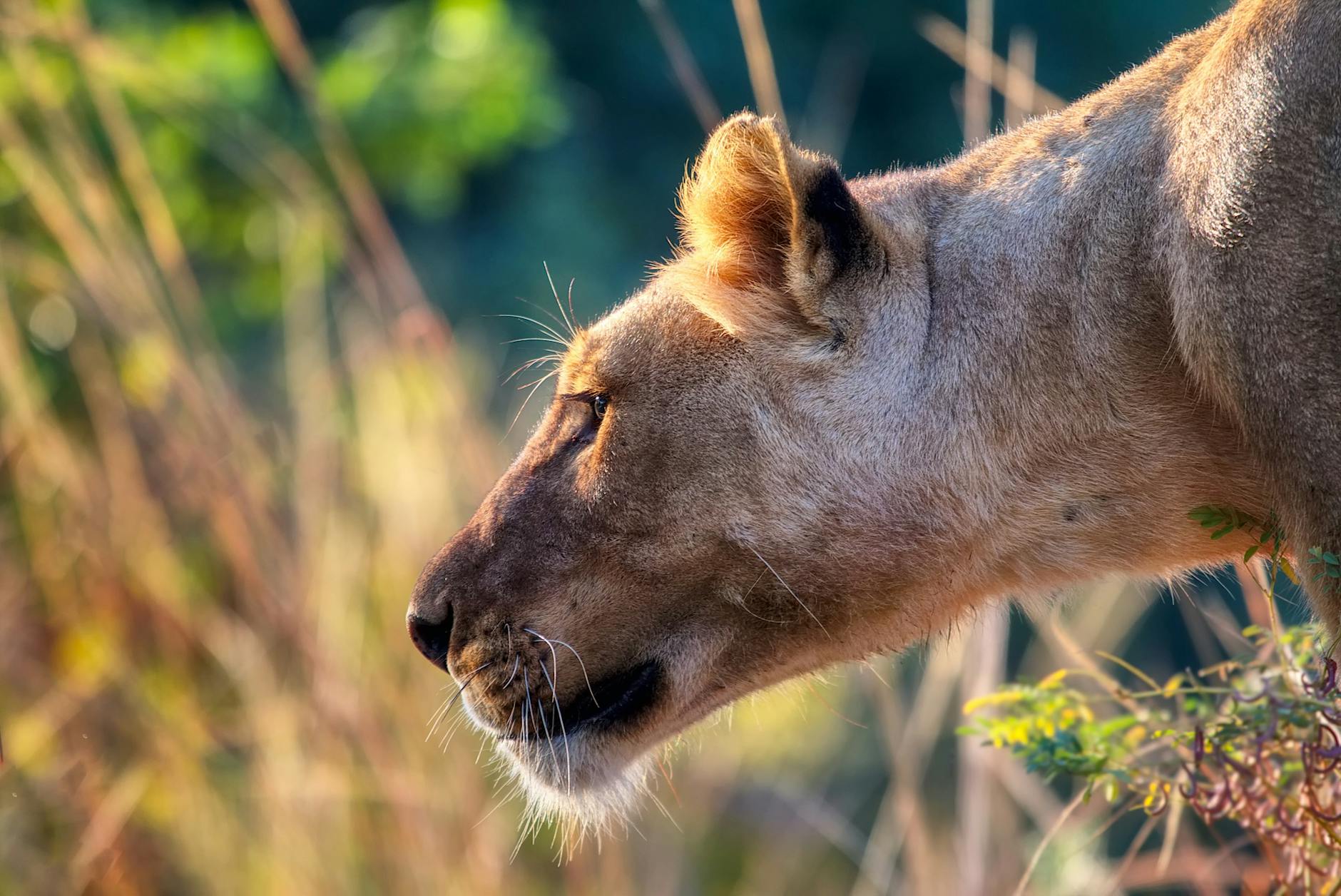
In the lion world, it’s the females who are the real powerhouses when it comes to the hunt. While male lions dominate the image of raw strength, lionesses are the ones who keep the pride fed—using intelligence, strategy, and teamwork to catch their prey.
In this post, we’ll explore how lionesses hunt, how they coordinate their efforts, and why their success depends on both skill and cooperation.
Why Lionesses Do the Hunting
Male lions can hunt, and sometimes do—especially when alone or in small coalitions. But in a pride, the lionesses take the lead for a few key reasons:
- They’re lighter and more agile, making them better suited for chasing prey.
- They hunt in groups, allowing for coordinated ambushes and flanking tactics.
- They feed the pride, including cubs and resident males, making their hunting success essential for group survival.
Males often follow behind to claim first rights to a fresh kill, but without the lionesses, there would be no meal to begin with.
The Hunting Process: From Stalk to Kill
Lion hunting is a step-by-step process, often carried out under the cover of darkness or in the cool hours of dawn and dusk.
1. Spotting the Prey
Lions rely on stealth, not speed, so they choose prey that’s either isolated, distracted, injured, or young. Common targets include:
- Wildebeests
- Zebras
- Antelope
- Buffalo (in coordinated attacks)
2. The Stalk
Lionesses use the terrain—tall grass, bushes, or riverbanks—to get as close as possible without being seen. They often approach from downwind to avoid detection.
3. The Ambush
Lionesses spread out in a semi-circle. One or two will serve as “flushers” to drive the prey toward hidden “ambushers.” It’s a classic pincer movement—and incredibly effective when executed well.
4. The Kill
Once within striking range (usually less than 30 feet), lions explode into a sprint. They aim to:
- Trip or tackle the prey
- Go for the throat or nose to suffocate the animal
Success isn’t guaranteed. Even experienced lionesses fail in more than half of their hunts. Large prey can fight back, injuring or killing lions.
Teamwork Makes the Kill Work
Lionesses don’t just hunt together—they know each other. Studies show that pride members can:
- Recognize individual roles and positions in a hunt
- Synchronize movements without vocal communication
- Learn from each other, especially older, more experienced hunters
Synchronized group hunting is one of the traits that make lions unique among big cats.
Feeding Time: The Pecking Order
Once the kill is made, it’s not just a peaceful feast. Feeding can be competitive, especially with:
- Dominant males often pushing in first
- Growling, swatting, and fighting breaking out around the carcass
- Cubs and lower-ranking females eating last—or not at all if food is scarce
Still, lionesses show remarkable tolerance for each other, especially compared to more solitary big cats like leopards or tigers.
Challenges to Hunting
Despite their skill, lionesses face several challenges:
- Competition from scavengers like hyenas and vultures
- Injury from prey such as buffalo or zebra kicks
- Environmental changes that affect prey availability (e.g., droughts)
- Human conflict, especially when lions hunt livestock
Some prides adjust their tactics over time or specialize in certain prey. Others may even scavenge when hunting is too risky.
Final Thoughts
Lionesses are the engine of the pride—feeding, defending, and raising the next generation. Their hunts are not just brute force but carefully coordinated operations that require intelligence, communication, and courage.
Watching a pride of lionesses stalk, encircle, and bring down prey is witnessing nature’s strategy at its finest.
Up next in the series: Scavengers beware—how lions interact with hyenas and other competitors at the kill site.
More photos below ↓









Disclaimer: This blog post is for edutainment purposes only and may not be entirely accurate.






